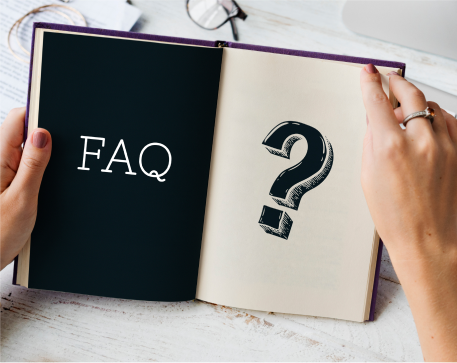Ready to learn?
Take the first step toward achieving your educational goals. Whether you’re preparing for exams or expanding your knowledge, getting started is just a click away. Join us today and unlock your full potential
832, utkarsh bhawan, near mandap restaurant, 9th chopasani road, jodhpur rajasthan - 342003
support@utkarsh.com
+91-9116691119
Support
Learning Resources
Rajasthan Govt Exams
Central Govt Exams
Civil Services Exams
Nursing Exams
School Tuitions
Other State Govt Exams
Agriculture Exams
College Entrance Exams
Miscellaneous Exams

© 2025 Utkarsh Classes & Edutech Pvt. Ltd. All Rights Reserved
Home
National Current Affairs
Economy
First Bi-Monthly Meeting of RBI’s Monetary Policy Committee Begins

Utkarsh Classes
Updated: 03 Apr 2024
4 Min Read

The Monetary Policy Committee (MPC) of the Reserve Bank of India is currently holding its first meeting for the financial year 2024-25, from April 3rd to 5th, 2024.
As per the amended RBI Act 1934, Section 45ZB, a Public Policy Committee (MPC) consisting of six members can be established by the Central government.
This committee is responsible for determining the policy interest rate required to meet the inflation target. The first-ever MPC was established on September 29, 2016.
There are six members in the Monetary Policy Committee (MPC), three of whom are from the Reserve Bank of India (RBI) and the other three are eminent economists.
Repo Rate: The Reserve Bank offers liquidity to its participants through the liquidity adjustment facility (LAF) against government and approved securities collateral at an interest rate.
Standing Deposit Facility (SDF) Rate: The Reserve Bank accepts overnight deposits without collateral from all LAF participants at a specific rate known as the SDF rate. The SDF rate is 25 basis points lower than the policy repo rate. As of April 2022, the SDF rate replaced the fixed reverse repo rate as the minimum interest rate for the LAF corridor.
Marginal Standing Facility (MSF) Rate: Banks have the option to borrow from the Reserve Bank at a higher rate for overnight loans by using their Statutory Liquidity Ratio (SLR) portfolio as collateral. The limit for this borrowing is 2 percent. This helps to prevent unexpected liquidity issues in the banking system. The Marginal Standing Facility (MSF) rate is set 25 basis points higher than the policy repo rate.
Liquidity Adjustment Facility (LAF): The term LAF stands for Liquidity Adjustment Facility, which refers to the methods used by the Reserve Bank to either inject or absorb liquidity from the banking system. This includes both overnight and term repo/reverse repos with fixed or variable rates, as well as SDF and MSF. In addition to LAF, other tools used to manage liquidity include outright open market operations (OMOs), forex swaps, and the market stabilization scheme (MSS).
LAF Corridor: The LAF corridor has a ceiling set as the marginal standing facility (MSF) rate and a floor set as the standing deposit facility (SDF) rate, with the policy repo rate in between.
Reverse Repo Rate: The Reserve Bank acquires liquidity from banks by accepting eligible government securities as collateral under the LAF at a particular interest rate. The RBI can now determine the fixed rate for reverse repo operations based on specific requirements and objectives with the implementation of SDF.
Bank Rate: The Bank Rate refers to the interest rate at which the Reserve Bank buys or rediscounts commercial papers and bills of exchange. Banks are required to maintain a certain amount of reserves including cash reserve and statutory liquidity ratio. If they fail to meet these requirements, they are charged a penalty rate.
Cash Reserve Ratio (CRR): Banks are required to maintain an average daily balance with the Reserve Bank, which is a percentage of their net demand and time liabilities (NDTL). This balance is calculated based on the last Friday of the second preceding fortnight, as notified by the Reserve Bank in the Official Gazette.
Statutory Liquidity Ratio (SLR): In India, every bank that operates must keep a certain percentage of its total demand and time liabilities in assets. These assets must be in the form of unencumbered government securities, cash, and gold.
Open Market Operations (OMOs): The Reserve Bank controls durable bank liquidity through buying or selling government securities.
Top Posts
Popular Tags
Economy
Loan and Grant
Rajasthan
Agriculture
Industry
Person in News
Portal
Place in News
Environment
Science and Technology
Government Scheme
Banking and Finance
Index
Agreements and MoU
International news
Report
Summit and Conference
Energy
Export
Banking & Finance
Committee and Commission
Infrastructure
Transport
Defence
Uttar Pradesh
Frequently asked questions

Still have questions?
Can't find the answer you're looking for? Please contact our friendly team.
Visit an Offline Centre Near to You.

1-Liner PDFs FREE !
Kumar Gaurav Sir ki Class PDF aur Daily One-Liner CA – Bilkul Free! Rozana preparation ko banaye aur bhi Damdaar!